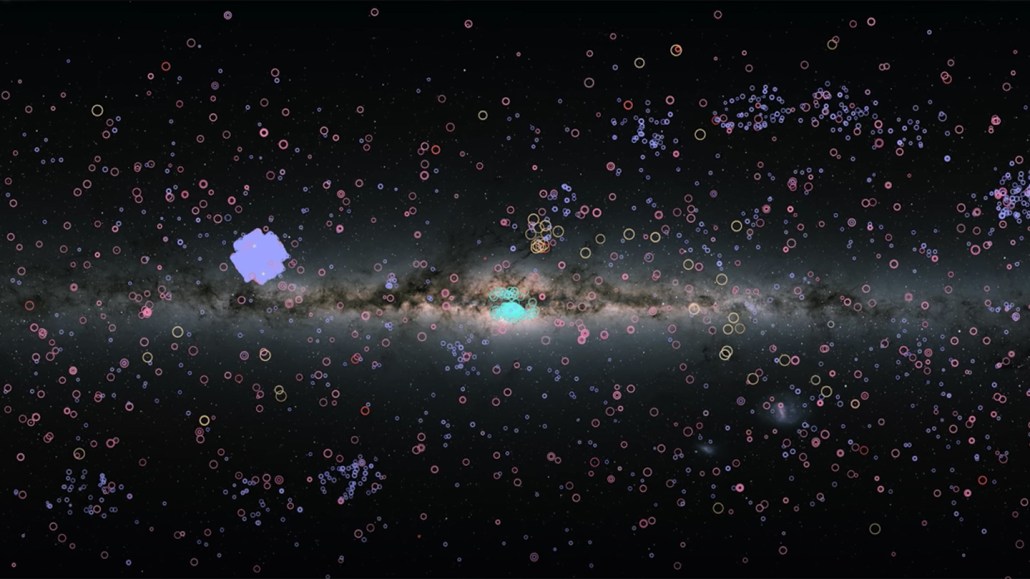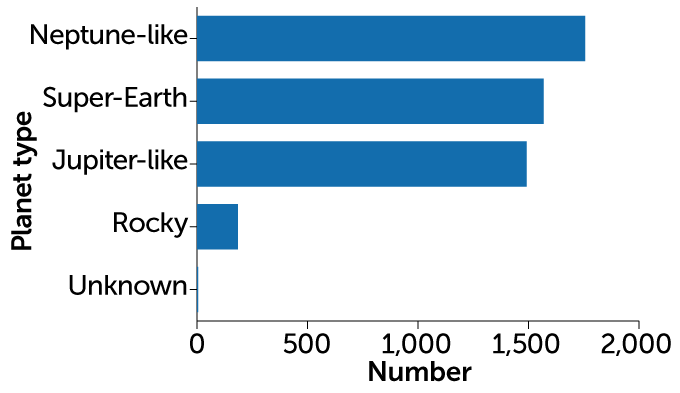
Our galaxy hosts more than 5,000 planets (pinpointed on this image of the Milky Way). Circle sizes show relative orbit sizes; colors denote various detection methods. The dense purple patch (center left) marks where NASA’s Kepler space telescope observed during its primary mission.
M. Russo/JPL-Caltech/NASA, A. Santaguida/SYSTEM Sounds








